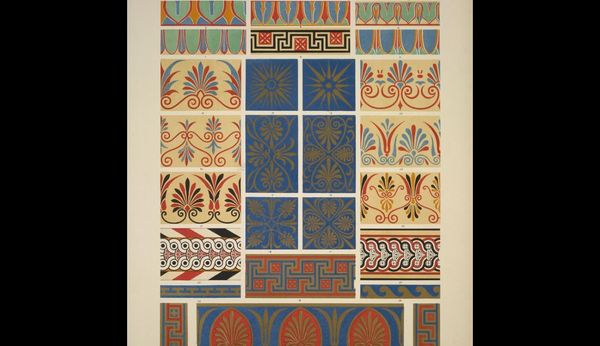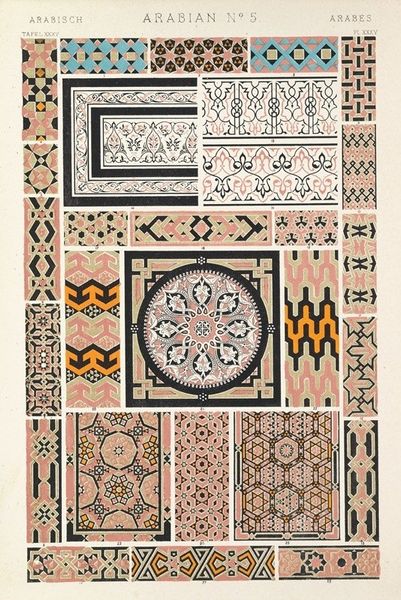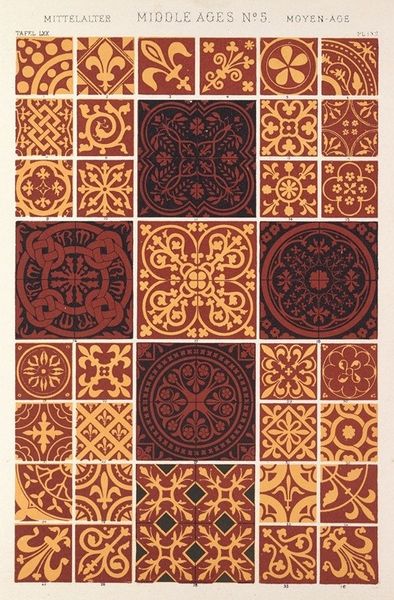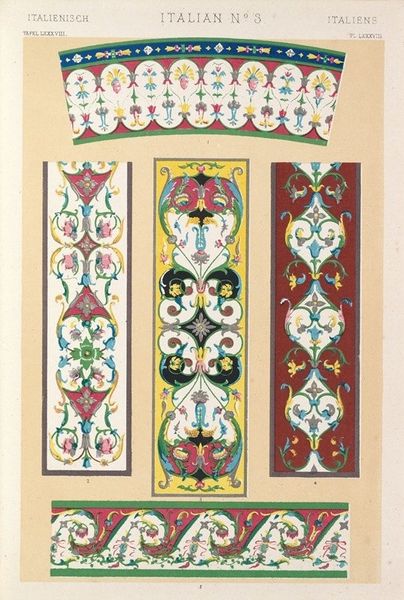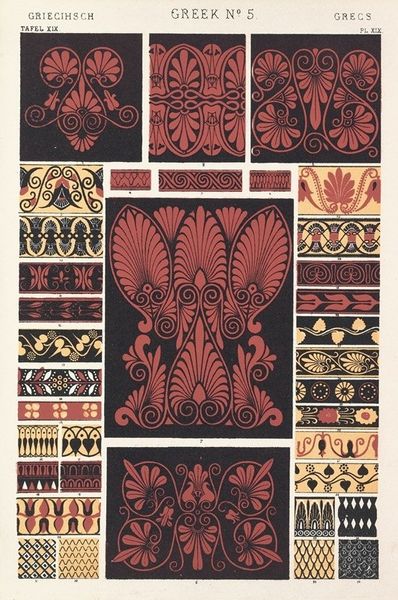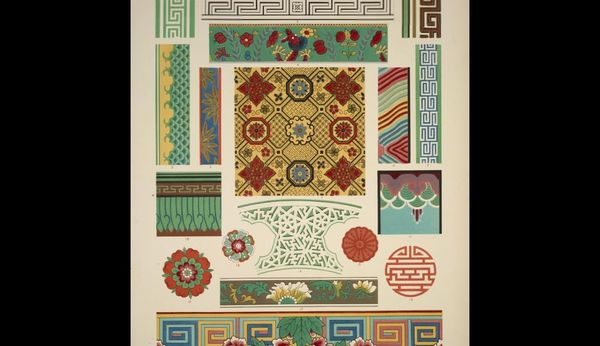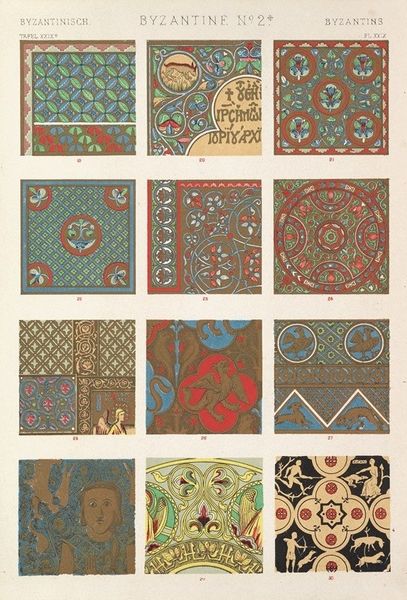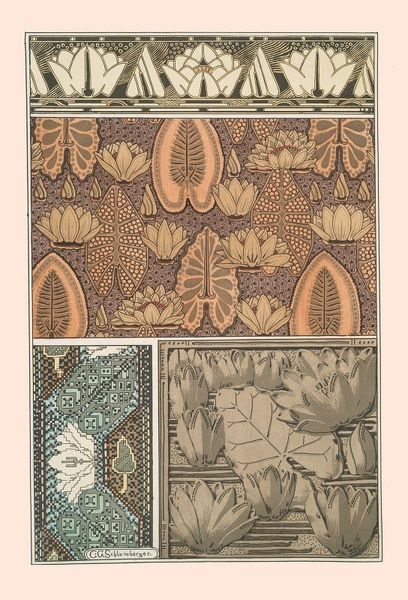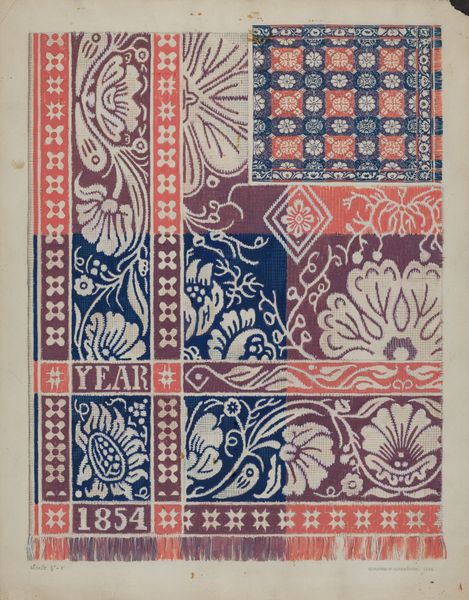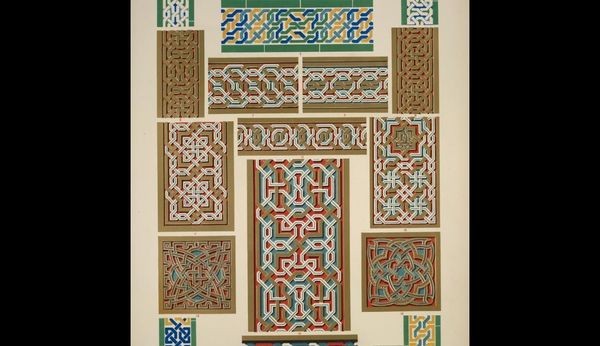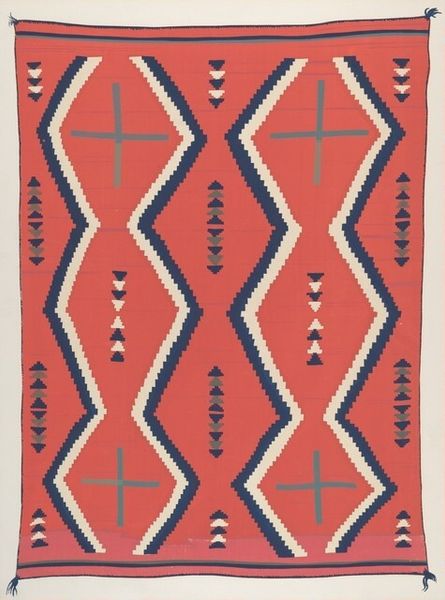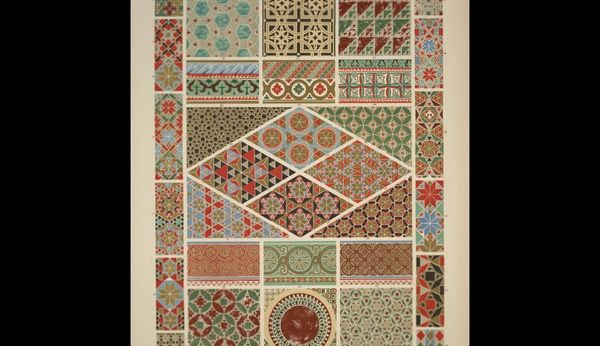
#
geometric
#
abstraction
#
decorative-art
Copyright: Public Domain: Artvee
Curator: Here we have Owen Jones's "Greek No. 8," dating back to 1856. What are your first thoughts on it? Editor: The repetition and symmetry are quite calming. But something about the color palette and the somewhat rigid geometry feels a little...stiff. Curator: The piece offers us insight into 19th-century decorative arts. Owen Jones, a key figure in the Arts and Crafts movement, was deeply influenced by historical ornamentation. Here, he presents various geometric patterns drawn from Greek art. Editor: Indeed. Each individual pattern has its own visual logic, a self-contained system. Look at the interplay between positive and negative space in the meander motifs, for example. It's fascinating how they define each other. Curator: The color choices are crucial. Notice how Jones uses a limited palette of earth tones, reds, greens, and blues to structure these patterns. It suggests an effort to connect with a historical aesthetic—specifically, attempting to visually define "Greekness." But also how the availability and industrial production methods influenced aesthetic choices. Editor: So, Jones isn't just copying patterns; he's also offering his 19th-century interpretation of classical style through materiality and repetition? How his social context frames our current viewing. Curator: Precisely. The rigid structure could be seen as a reflection of the Victorian era's penchant for order. "Greek No. 8" sits at an interesting intersection—a blend of artistic interpretation, historical research, and Victorian values. Editor: The interplay of these patterns creates an overall feeling of both meticulousness and an aesthetic language from history. Curator: Indeed, a perfect intersection for cultural investigation through line, color and form.
Comments
No comments
Be the first to comment and join the conversation on the ultimate creative platform.
